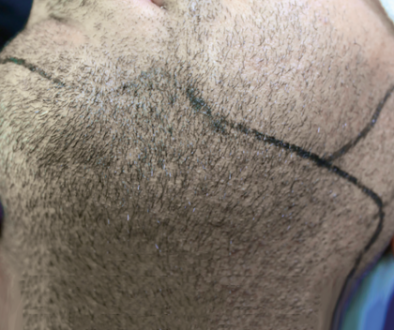What to Expect From Surgical Hair Restoration
Most balding men and women would love to restore their natural full head of hair by waving a magic wand and/or by popping a miracle pill. However, hair restoration involves careful and strategic planning with a skilled and experienced hair loss doctor. While Propecia (finasteride) and Rogaine (minoxidil) are typically good at slowing down or stopping the progression of male pattern baldness, hair transplant surgery is the only method of hair restoration proven to grow hair in completely bald areas.
Today’s state of the art hair transplants are very natural looking and undetectable by even the harshest critics. This explains its increase in popularity over the last several years. But while advancements in surgical hair restoration are indeed exciting, it’s crucial for men and women considering this procedure to develop realistic expectations. What can realistically be achieved with hair transplantation varies for each patient. Below, we’ve cited a few important tips in helping you learn what to expect from hair replacement surgery.
Supply Verses Demand: What can be realistically achieved depends on the supply of donor hair and the amount of baldness in demand of new hair. Most patients can typically only achieve an illusion of fullness even under the best circumstances. Thankfully, this is usually enough to provide patients with a cosmetically significant improvement. Those with advanced balding may have to make additional sacrifices and leave some balding areas untouched. To see what hair transplants can accomplish on patients of varying degrees of lost hair, view Hair Transplant Photos by Norwood scale.
The Unpredictable Future: Though family history can sometimes be used as a guide, female and male pattern baldness is both progressive and unpredictable. Thus, it is important to make the best use out of the available and limited donor hair supply, leaving plenty in reserve for the possibility of subsequent hair implant procedures that become necessary.
Reputable hair restoration physicians should always proceed with extreme caution especially on young patients. These quality doctors will often refuse hairline lowering procedures and extreme dense packing on patients if risks of significant hair loss are high. Age isn’t the only issue, but is to be strongly considered since risks of excessive hair loss in the future are much greater in young patients. The good news is that only a select rare group of men will progress to advanced stages of loss. See the Norwood Scale (men) and Ludwig Scale (women) for typical hair loss patterns of androgenic alopecia.
Going the Distance: While one hair transplant may or may not be able to meet your current objectives, restoration should be considered a journey rather than a single one and done procedure. Realistic expectations and a long term hair restoration plan should be discussed with your surgeon and agreed upon before undergoing even the first transplant. Be sure to discuss the risk of future baldness, the best use of a finite donor supply, and the realities of what hair transplantation can accomplish for you.
Doing the Math: The average donor hair supply with follicular unit transplantation (FUT) via microscopic dissection (strip surgery) is approximately 5000 to 8000 follicular units. For patients considering follicular unit transplantation via follicular unit extraction (FUE), a patient’s average donor supply is a little less – between 3000 to 5000 follicular units. Usually a combination of strip and FUE can provide more than either procedure itself but less than the sum of both.
In men and women with moderate to advanced balding, there is much more demand for hair than available supply. Thus, it’s important to work with a reputable hair transplant surgeon to develop realistic goals. To gain a proper perspective on the amount of hair needed for a full restoration, see “Can Hair Transplant Surgery Help Me Look Like Chris Martin from Coldplay?”
Bill Seemiller
Associate Publisher/Editor
Technorati Tags: balding, hair restoration, hair loss, hair transplant, grow hair, bald, hair transplants, hair transplantation, hair replacement, donor hair, baldness, family history, male pattern baldness, hair implant, hair restoration physicians, dense packing, strip surgery, follicular units, FUE



